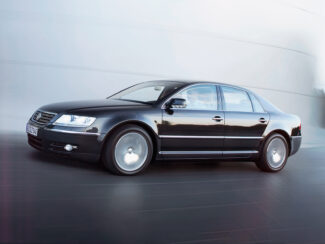
Hyundai i-oniq Concept

At the GIMS 2012, Hyundai presented the i-oniq Concept.
At that time, battery capacity and charging technologies were still limited, so the appeal of electrified and EV vehicles was also limited. GM, with its Chevrolet Volt/Opel Ampera, BMW with its i3 and Fisker with its Karma had commercialised the “Range-Extender” concept, a small combustion engine acting as a generator and thus increasing the range of these electrified vehicles.
Hyundai also adopted this approach, and the i-oniq concept was the first demonstration. It featured a 109 PS electric motor combined with a 61 PS, 1.0 litre 3-cylinder engine. In electric mode, the range was up to 120 km, and the combustion engine’s contribution allowed it to reach 700 km with only 45 g/km of CO2 emissions.

In terms of styling, the i-oniq concept is distinguished by its coupé-like profile, symbolised by the arched roof that runs from front to back. The flanks are muscular, while the elytra doors add to the overall dynamism.
The ideas proposed by the i-oniq concept will see the light of day in 2016, with the Hyundai Ioniq, unveiled at GIMS 2016.
While the general features of the Hyundai Ioniq are inspired by the 2012 concept and allow it to achieve high aerodynamic efficiency, it is above all the world’s first vehicle to have been designed for three types of powertrain: hybrid, PHEV and EV. With the Ioniq, Hyundai has become a major player in electrification. It also served as the basis for the implementation of the manufacturer’s first autonomous driving tests.

In July 2022, the Ulsan plant in Korea will cease production of the original Hyundai Ioniq, furthering the goals of its strategic plan. Between 2016 and 2021 more than 135,000 Hyundai Ioniq were sold in Europe.
Its legacy is a name, Ioniq, now Hyundai’s fast growing electric range.













